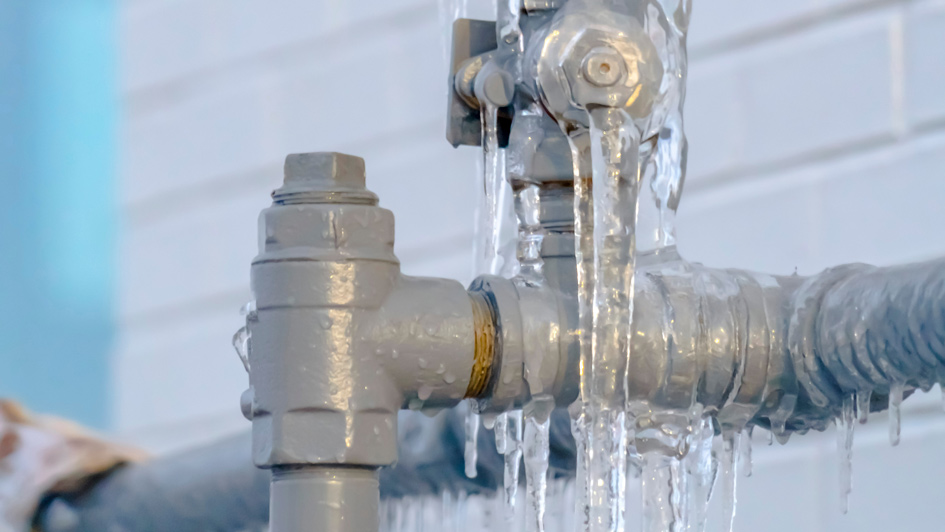
Lots of snow and winter weather presents a great opportunity for things like sledding down the highest hill or snowball fights in the back yard. That being said, winter weather can be hard on your home. Extremely cold conditions can cause the water lines in your plumbing to freeze and burst, which could cause serious water damage and enduring negative effects.
Once your pipes are frozen solid, you should contact a plumber in Marshalltown to handle the problem. That being said, there’s a lot you can perform on your own to stop this from happening – and even minor prevention can go a long way.
What Pipes Are at More Risk of Freezing
The pipes at the greatest risk of freezing are uncovered water lines. Frequent locations for uninsulated pipes are within attic crawlspaces, near exterior walls, in the basement or even running beneath a modular home. Water lines that are not properly insulated are at the biggest risk.
How to Stop Pipes from Freezing in Your Home
Properly insulating exposed water lines is a solid first step to keeping your pipes ice free. You’ll often have access to most of these materials from your local plumbing company, and might also already have some somewhere in your home.
Try not to cover other flammable insulation materials where they may light on fire. If you don’t feel safe insulating the pipes yourself, call your local plumbing services professional in Marshalltown to handle the job.
If you do prefer to insulate the pipes by yourself, popular insulation materials for pipes consist of:
- Wraps or roll insulation: Multiple plumbers, hardware stores and national retailers sell insulation – usually fiberglass, foam wraps or pipe sleeves – that you can use to cover or fit around your pipes. They are sold in different lengths and sizes to satisfy the needs of your home.
- Newspaper: In a pinch, newspaper can be used for insulation. If the weather is cooling down and you aren’t able to put in more insulation before then, wrap uninsulated pipes in this.
- Towels or rags: If you miss the opportunity to add insulation and don’t have any newspaper close by, wrapping particularly vulnerable pipes with towels or clean rags as a last-ditch effort can be just enough to keep the cold air off the pipes.
One other preventative step you can try to stop pipes from being covered in ice is to fill any cracks that could allow cold air into your home. Pay close attention to window frames, which can draw in surprisingly intense drafts. Not only should this help to stop your pipes from freezing, but it will have the added benefit of making your home more energy efficient.
Five More Ways to Keep Your Pipes from Freezing:
- Open the cabinet doors. Opening the cabinet doors under the sinks and other rooms of your home with plumbing will permit more warm air from the rest of the room to get to the pipes.
- Letting water drip. Keeping the water flowing by letting your faucets trickle even just a bit can help avoid frozen pipes.
- Open interior doors. By opening doors between rooms or hallways, your home can be heated more consistently. This is especially important if there's a room that is generally colder or hotter than the remainder of your home.
- Close the garage door. The exception to the open doors recommendation is the garage door, which you should keep down – namely if your water lines run through the garage.
- Keep the heat steady. Experts recommend setting the thermostat at a uniform temperature and leaving it in place, rather than allowing it to get cooler at night. Set it no cooler than 55 degrees.
How to Prevent Pipes from Freezing in an Empty Home
When you’re at home, it’s not difficult to know when something goes wrong. But what additional steps can you attempt to stop pipes from freezing in an unused home or vacation home when the consequences from a frozen pipe might not be discovered for a while?
As with your primary residence, placing extra insulation around any exposed water lines, opening interior doors throughout the home and winterizing the vacant home are the first steps to attempt first.
Other Steps to Stop Pipes from Freezing in an Unused Home:
- Leave the heat on. Even though you aren’t going to be there, it’s best to leave the heat on – even if you adjust the thermostat down cooler than you would if you were there. As with a primary home, experts encourage keeping the temperature at no colder than 55 degrees.
- Shut water off and drain the lines. If you’re going to be gone for a long time or are winterizing a seasonal cabin or cottage, turning the water off to the house and emptying the water out of the water lines is one way to keep pipes from freezing and breaking. Remember to clear the water out of any appliances, such as the hot water heater, and the toilets. Make sure you empty all the water from the system. If you’re unsure of how to drain the water from the pipes, or don’t feel comfortable handling it yourself, a plumber in Marshalltown will be glad to step in.


